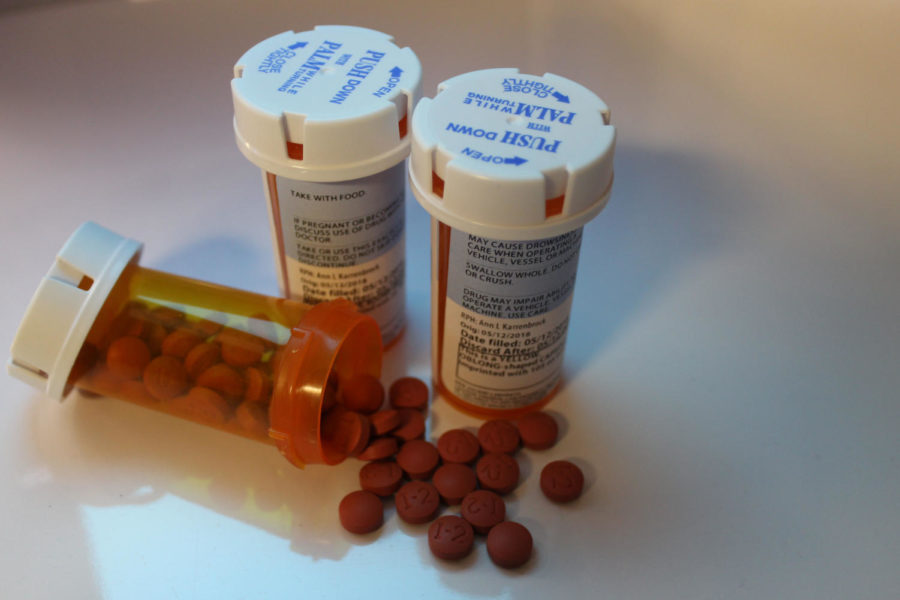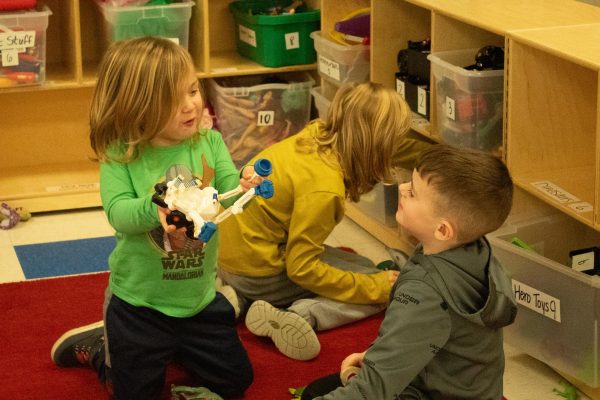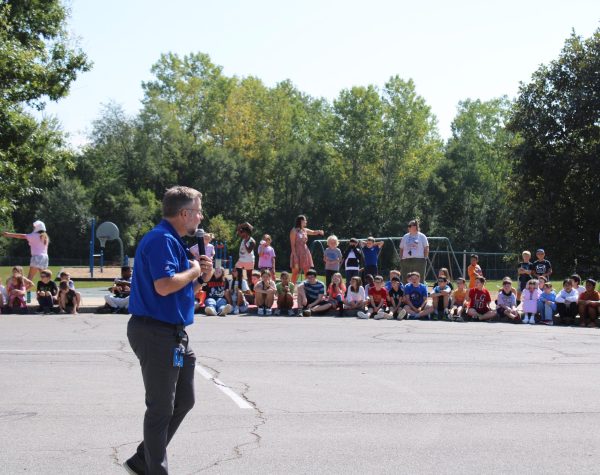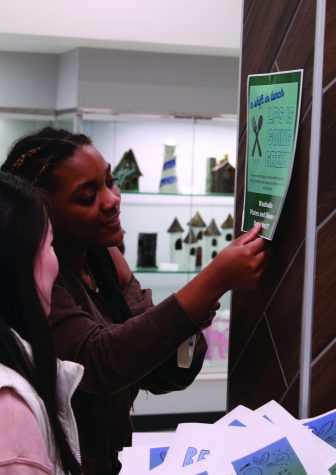Dodge the Drugs
Staff and students discuss the impact of drugs on high schoolers.
Despite years of research that has delved into the reasoning behind drug abuse, there has yet to be a definite explanation for why some individuals are more likely to use drugs than others. Some theorize that family history of substance abuse leaves some people predisposed to addiction. Some say those from low income families have easier access to drugs. However, one of the biggest factors in drug use is recreational use and peer pressure.
Teens begin abusing drugs for a multitude of reasons. Boredom, depression, anxiety, childhood trauma and curiosity are all common denominators in the 10% of high schoolers who abuse drugs. Drug use can be seen as a “way out” of a difficult situation, or teens may feel peer pressure from the assumption that ‘everyone else is doing it.’ This mindset is dangerous because it only takes one night of drug abuse to lead to a lifetime of addiction.
“Teens need something to excite them, everyone needs to find their niche that keeps them busy,” LHS Nurse Becky Kovac said. “If you don’t find what you love to do, you have more free time on your hands and it makes it easier to fall into that trap of addiction. I wish I could say that all kids are too smart to be sucked into that pressure but unfortunately, they’re convincing. These drugs are so addictive that sometimes you can become addicted to a particular drug after only taking it one time.”
Kendra Callaway, who is the Prevention Program Director of Liberty Alliance for Youth, agrees.
“The younger someone begins using a substance, the more likely they are to develop an addiction,” Callaway said. “This is because the brain is still developing until about the age of 25. Substance use during adolescence can hijack the brain’s reward system which can then lead to addiction.”
Marijuana
This is true even when considering ‘gateway drugs’ such as marijuana and edibles. It is a common belief among teens that marijuana is harmless and comes with no negative repercussions from use. This has been disproved for years, especially during the period the brain is still developing.
“Regular marijuana use has been linked to substance use disorders and psychotic episodes,” Callaway said. “It also can lower a person’s IQ by up to eight points.”
Marijuana edibles, a method of baking the tetrahydrocannabinol (THC) into a snack such as brownies, can contain up to 30% THC. While this is not enough to cause long term physical harm to a human, it is enough to cause serious injury and even death in animals.
Freshman Jillian Hough argues that marijuana can impact more than just IQ.
“It affects school life negatively,” Hough said. “But it doesn’t just affect intelligence but social life, students might push away their friends. I think their friends pushing them away contributes to drug use as well or if they had no friends to begin with and had no place that they fit in.”
Not all reasons for using drugs come from school. Home life can also be a contributor. Some modern parents are seeing marijuana as acceptable and are using it themselves. A few will even offer some to their kids.
“I think it has a lot to do with what’s going on at home and how easy of an access they have to get it,” junior Nese Selepeo said. “If their parents are caring about them, watching them and paying close attention to what they do, that has a lot to do with whether a person uses drugs or not.”
Prescription Drugs
An estimated 2.1 million Americans abuse prescriptions non-medically. According to Calloway, up to an estimated 30% of these individuals are adolescents. These prescriptions include Adderall, Xanax, Valium and opioids. This statistic is increasingly disturbing to many when considering that, according to DrugFree.org, teens who abuse prescription drugs are twice as likely to use alcohol, five times more likely to use marijuana and 12 to 20 times more likely to use illegal street drugs such as heroin, ecstasy and cocaine than teens that don’t abuse prescriptions.
“Medication is often prescribed based on height, weight and other known factors,” social worker Cathy Mendez said. “What affects one person in a specific way may have a totally different effect on another individual which can lead to dangerous side effects.”
These dangerous side-effects can include a drastic drop in blood pressure, slowed breathing, irregular heartbeat, seizures, insomnia, paranoia and even death.
Although less common than recreational marijuana, prescription abuse is still a common method of achieving a high among teens due to its accessibility. One anonymous source described their struggle with the anxiety medication Xanax.
“I started smoking weed somewhere around the summer after eighth grade,” one anonymous source said. “But after a year or so of just smoking weed, someone I thought was my friend laced the marijuana we were smoking with Xanax. It was the most relaxed I had ever felt and I loved the feeling. Xanax and prescriptions are extremely addictive and it didn’t take long before I craved it a lot. I abused Xanax and weed together for a long time until I had to get a job and forced myself to quit.”
Vape
Vaping is a trend that has swept the nation and has found a place in schools. In fact, according to News on Heart.org, The American Heart Association estimates an average of one in four teenagers vape regularly. Not only is vaping on school grounds a consequence of possible out-of-school suspension but it’s also just as dangerous to your lungs as cigarettes.
“One Juul (Vape) cartridge can contain as much nicotine as an entire pack of cigarettes,” Kovac said. “Your potential for addiction to vapes is much higher than that of cigarettes. There are so many chemicals being pumped in there with nicotine that it causes just as much damage to your lungs.”
Students have found different ways to sneak vaping in school. Students report seeing it in the bathroom and even in class, sneaking it in through their sleeves.
Sophomore Samantha Seggerman feels vaping damages a school’s learning environment.
“I don’t appreciate it being used at school,” Seggerman said. “I think the people using drugs and vapes should be respectful to the people around them, it’s a distraction for students and peers and really isn’t helping anyone.”
Many believe that vaping is safer, but it still contains harmful and addictive elements to one’s lungs. Junior Nese Selepeo shared her perspective.
“My thoughts on vaping in school settings are very serious,” Selepeo said. “I’ve literally seen Snapchat videos of people vaping in the bathroom. It’s better than smoking but there’s still nicotine in it. Plus, you can smoke weed with a vape.”
Symptoms of Drug Use
Spotting addiction can be difficult but there are some telltale signs of addiction in a school setting that can be the difference between life and death.
“A big thing to look for is unexplained significant change such as sleeping more or less, eating more or less, decrease in motivation, lack of interest in activities someone used to be involved in, withdrawal from family and increased secrecy,” Callaway said. “These could be caused by other things besides drug use so they aren’t definitive. However, they certainly should raise red flags and indicate a need for exploring the cause.”
Solutions
Practicing safe medication habits is the first step in stopping drug abuse in communities everywhere. This includes not sharing prescriptions, only taking the recommended dosage, consulting a doctor before taking any new medication and safely disposing of unused medication.
Science teacher Maria Knowles shared her knowledge on safe medication use.
“Getting prescribed the prescription and taking the full thing is important,” Knowles said. “Try to keep it at your house and don’t bring it to school. If you need to bring medicine to school, the safest thing is to check it in with the nurse and then you take it with the nurse. Then you have no pressure of another student seeing you taking something and there’s no pressure of being looked down upon. That’s what we try to do at the school. Within the school, it’s much better to take your medicine down at the nurse.”
There are some misconceptions about sharing medication. Sharing medication does not have to be intended for recreational use but is also harmful when someone shares their prescription to help someone experiencing similar symptoms. Prescriptions are intended for one person only, and in this case, sharing is not caring.
Safe disposal is also very important when considering safe medication use.
“The greatest spot is police stations,” School Resource Officer Kim True said. “They have a location where you go and drop off unused prescriptions to prevent other people from getting their hands on it.”
Reach Out
If a student thinks that a peer may be suffering from drug addiction, or want to get help for themselves, there are resources available in school. Use Sprigeo to help a friend, call the National Drug Abuse hotline at 1-877-969-2133 or see a counselor for help figuring out the next steps to recovery.
“There are many ways to get help including individual counseling or a treatment facility,” Mendez said. “Some of the local outpatient treatment facilities include Preferred Family Healthcare, Signature Behavioral Health or the C-Star program.”







